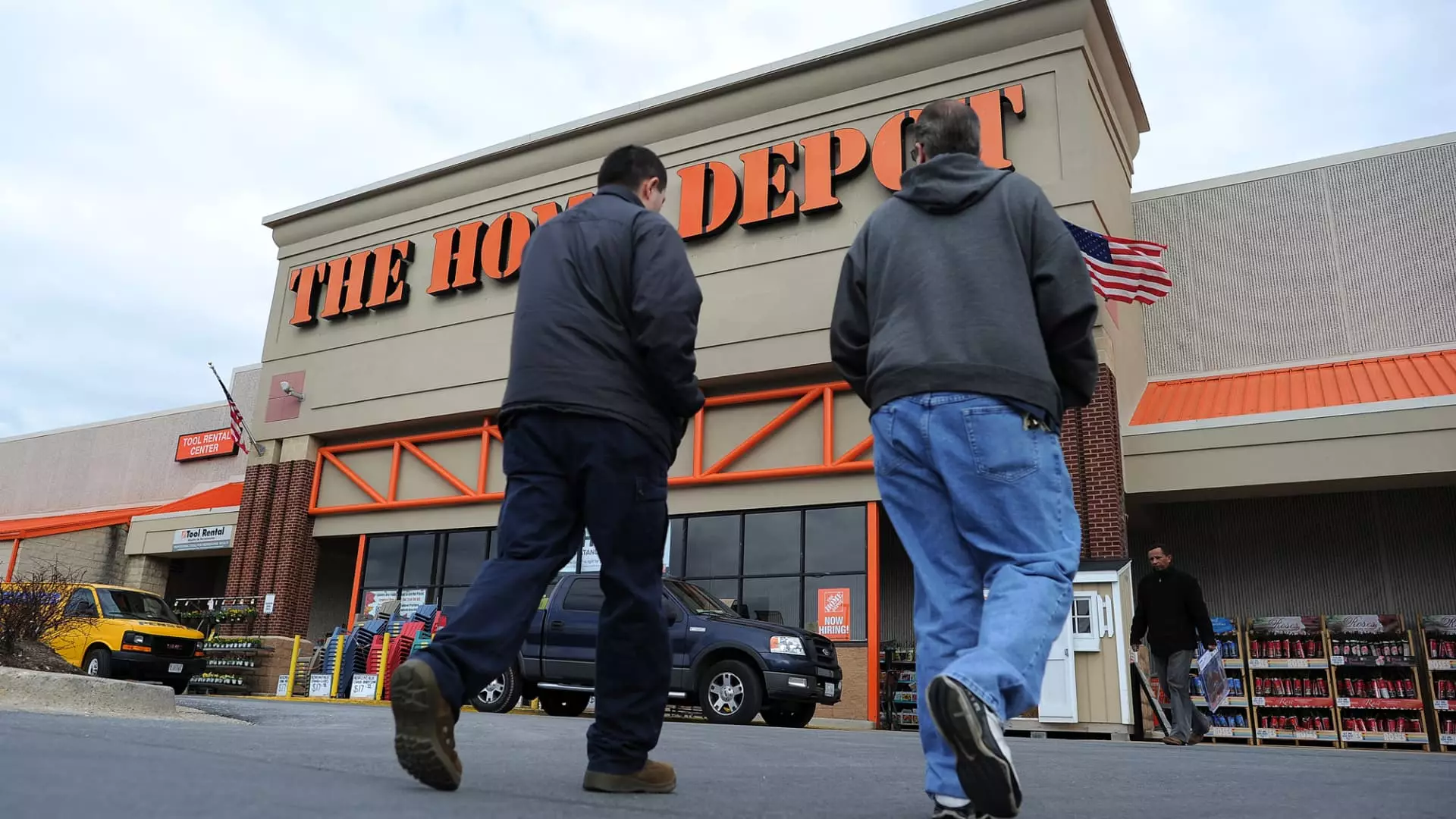Home Depot, the leading home improvement retailer, recently reported quarterly results that exceeded expectations. However, the company also issued a caution that sales in the latter part of the year might be weaker than anticipated. This warning was attributed to the impact of high interest rates and consumer uncertainty, which have both contributed to a decrease in demand. Home Depot revised its full-year comparable sales forecast to a decline of 3% to 4%, a significant shift from the previously predicted 1% decline. Chief Financial Officer Richard McPhail highlighted the fact that consumers have adopted a “deferral mindset” due to rising interest rates, prompting a delay in major purchases like home renovations.
Despite the challenging sales outlook, Home Depot’s recent acquisition of SRS Distribution is expected to bolster total annual sales. The company predicts a sales increase between 2.5% and 3.5%, inclusive of a 53rd week in the fiscal year and approximately $6.4 billion in sales from SRS. However, excluding sales from this acquisition would have resulted in a revenue cut for Home Depot. This shift in forecast reflects the dynamic nature of the retail industry, and the need for companies to adapt to changing consumer behaviors and economic conditions.
Home Depot boasts a relatively stable customer base, with around half of their sales attributed to home professionals and the other half to DIY customers. Notably, approximately 90% of their DIY customers own their homes, indicating a certain level of financial stability among their clientele. Despite this, the company still experienced the effects of consumer uncertainty, particularly evident in the decline of demand for various project-driven items like lighting and flooring. Additionally, Home Depot observed a decrease in net income for the fiscal second quarter, further highlighting the challenges faced by the retailer in the current economic landscape.
Consumer transactions at Home Depot’s stores and website declined, with shoppers visiting less frequently and spending less during each visit. This trend of postponed projects can be attributed, in part, to the anticipation of a rate cut by the Federal Reserve. The potential for lower interest rates has led consumers to hold off on financing home improvement projects, waiting for a more favorable lending environment in the future. Despite this, Home Depot remains optimistic about the long-term prospects of the home improvement industry, citing factors like the aging housing stock, housing shortages, and property value gains as drivers of future growth.
Home Depot’s challenges in the current economic climate underscore the complexities of the retail industry. The interplay between interest rates, consumer confidence, and market trends poses significant hurdles for companies like Home Depot. By closely monitoring these factors and adjusting their strategies accordingly, Home Depot aims to navigate through these uncertainties and position itself for sustained growth in the future.

